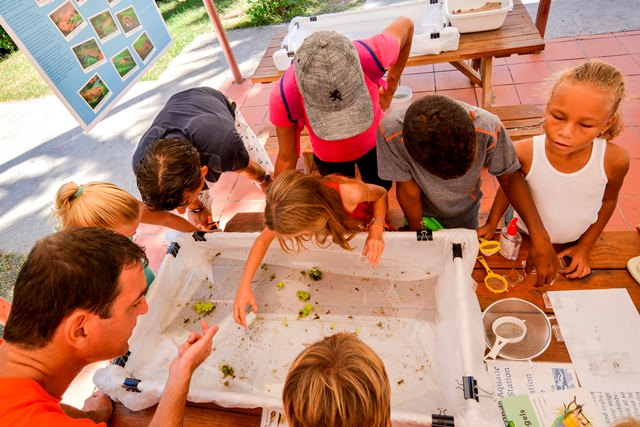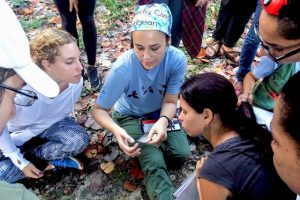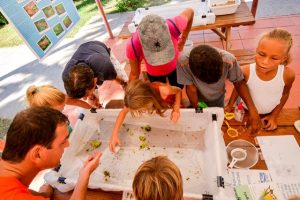
CARIBBEAN ISLANDS – As migratory birds arrived to settle in the Caribbean for the winter, a series of festivals celebrating these birds swept through the region’s islands as well.

In Cuba, a group of local and international students learned about how birds are captured and banded for research, as well as identified a plethora of migrant warblers in a birding walk. Students in the Dominican Republic visited the National Botanical Garden to spot migratory birds and participate in a bird art competition organized by Grupo Acción Ecológica.
Members of the public in St. Maarten were treated to a variety of presentations and activities in a day-long event, including learning about aquatic insects that sustain migratory birds in a Portable Pond Discovery Station, and how two women laid the groundwork for major conservation treaties in efforts to save egrets from exploitation by the fashion industry.

Over in Puerto Rico, a group of students were delighted to learn how to use binoculars to spot magnificent Frigatebirds, Royal Terns, and Osprey feeding in the waters of the Jobos Bay National Estuarine Research Reserve.
What was all the fun about? It was the annual fall celebration of International Migratory Bird Day (IMBD), a hemispheric festival highlighting the fascinating story of bird migration. The festival is coordinated in the Caribbean by BirdsCaribbean, a regional non-profit dedicated to raising awareness about and conserving the region’s birds and habitats.
Energetic partners at refuges, parks, museums, schools, botanical gardens and protected areas throughout the region hosted dozens of events, including birding walks and talks, art activities, games, tree plantings, clean-ups and more.
This year the IMBD theme was: Spread Your Wings for Bird Conservation, in recognition of the centennial of the U.S. Migratory Bird Treaty, which made it unlawful to pursue, hunt, take, capture, kill or sell migratory birds. Local organizations and coordinators in each island highlighted how laws, treaties and protected areas help conserve our migratory birds, and what the average citizen can do to help, such as never buying wild-caught birds, reporting the capture and sale of wild birds to the authorities, planting native trees for birds, and supporting local environmental groups that work to conserve nature.

At IMBD events throughout the region, many participants were surprised to learn that the Caribbean islands provide a winter home for dozens of different migratory bird species. However, from ducks to shorebirds, warblers to hawks, many of these species have unfortunately been experiencing declines in recent years due to destruction of native habitats, pollution, hunting, poaching and other threats.
“The annual festival provides a unique opportunity to involve people in learning about these birds, and how important our coastlines, wetlands, forests, protected areas and gardens are in sustaining these birds, as well as people,” commented Regional Coordinator Ingrid Flores.
Abelardo Díaz Alfaro Elementary School of Puerto Rico celebrated a week-long Migratory Bird Festival, including the creation of a beautiful collage, a mural and presentations by students about how they can help conserve birds.
Meanwhile, others visited protected areas like the Vieques National Wildlife Refuge in Puerto Rico, which held a week-long open house with presentations and videos about migratory birds and the value of the

refuge and bird art activities for kids.
Youth in Jamaica were treated to a field trip that included birding and a nature scavenger hunt, thanks to the National Environment and Planning Agency.
After a hugely successful 2016 festival, planning is already underway for IMBD celebrations in 2017, which will focus on the importance of “stopover sites” – places for migratory birds to rest and “refuel” during their long migrations. The Caribbean islands host a wealth of such sites, providing another opportunity to get people outside enjoying nature and the colorful and endlessly fascinating winter visitors.




























